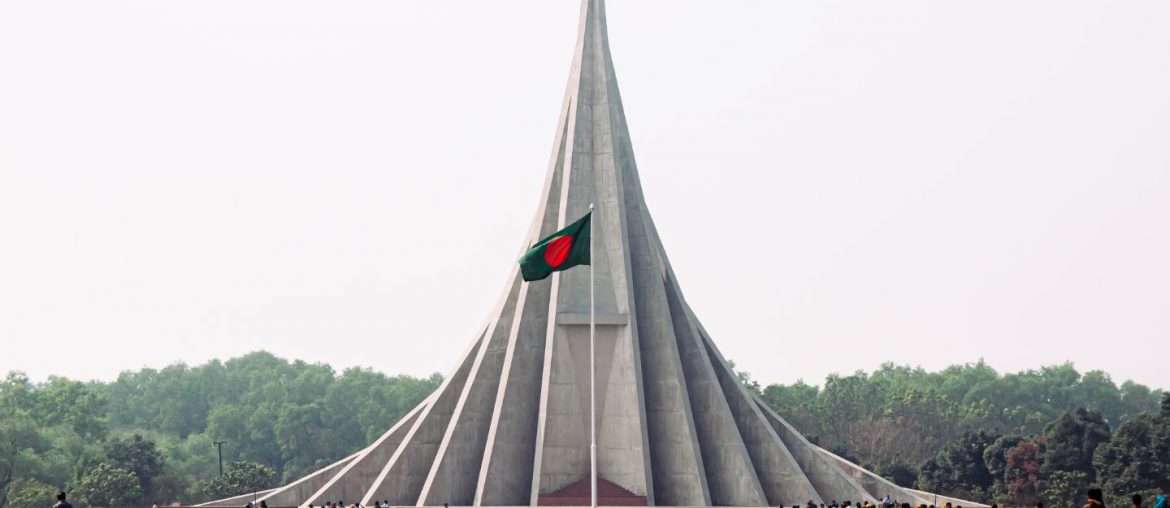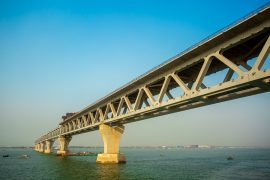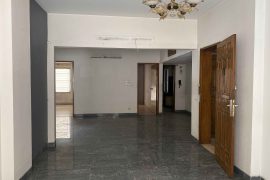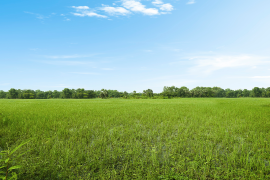1971; the year was of fear and grief as much as it was of bravery and courage. In spite of innumerable sacrifices and suffering heinous oppressions, the entire nation turned its fate around with victory as its mantra. First, we freed a handful of territories of the enemies, then ultimately snatched 55,000 square miles of independent land from them and established Bangladesh as a sovereign nation in the world. The National Martyrs’ Memorial was built To commemorate all the martyrs who sacrificed their lives for the long-awaited victory.
But not only just commemorating the martyrs of the liberation war but the significance of the National Martyrs’ Memorial is also rooted deep in history. History, that propelled us to freedom and played a seminal role in building the grit and determination needed to defeat the enemy. Today I will shed light on the significance of the National Martyrs’ Memorial from a perspective that is uniquely mine.
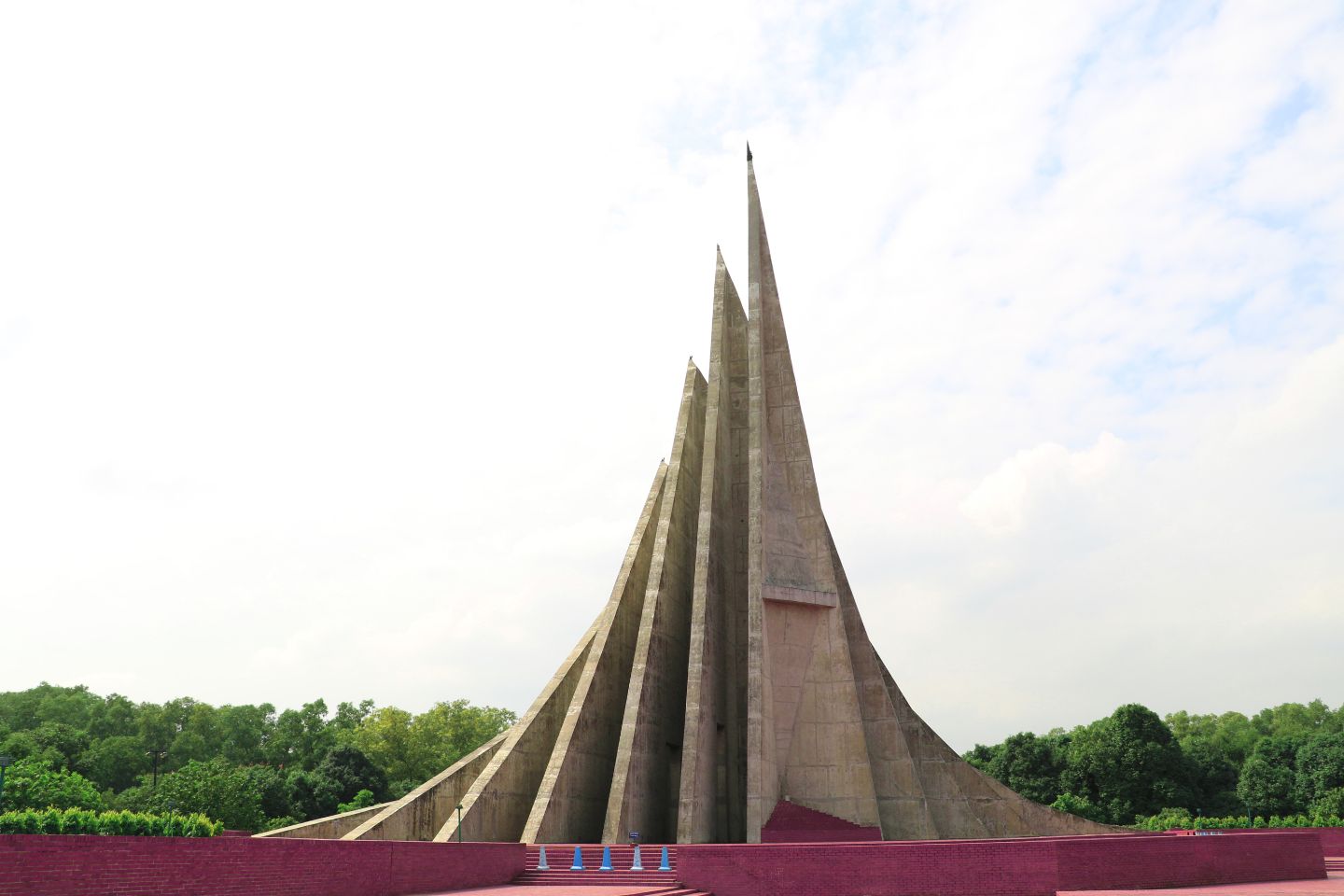
National Martyrs’ Memorial in my eyes
The area is surrounded by red-brick walls. Upon entering the premises, the first thing that will catch the eyes is the inscription on a white sandstone that says:
“বীরের এ রক্তস্রোত মাতার এ অশ্রুধারা
এর যত মূল্য সে কি ধরার ধূলোয় হবে হারা”
A little further ahead from the inscription is where you will find the white foundation stone. There is an amphitheater located on its right. However, if you walk straight, you will get to the National Martyrs’ Memorial. The monument gives different vibes from different perspectives. The main structure of the monument is made of concrete and the other structures of the complex are made of red brick. Because the main purpose of this distinction is to preserve the seriousness and uniqueness of the original building.
However, visitors have to walk a long way to reach the monument from the main gate of the memorial complex. There are many courtyards in the path and crossing them will require you to take stairs to go up and down several times. Then you have to cross a big artificial reservoir by a beautiful bridge. There are mass graves on both sides of the road as well. However, this long walking path to the memorial signifies the struggles and ups and downs that the nation has had to go through to achieve independence. And each red brick in the square is soaked with the bloody history of our war of independence. The pool is a symbol of tears and the mass grave reminds us of the sacrifices that have been made by the martyrs.
The entire area is built on 34 hectares of land and is surrounded by more than 10 hectares of greenery which symbolizes green Bangladesh. On special occasions such as national holidays including Victory Day and Independence Day, people come here across the country to pay their respects to the martyrs and meld themselves with the glorious history of the liberation war up close and personal.
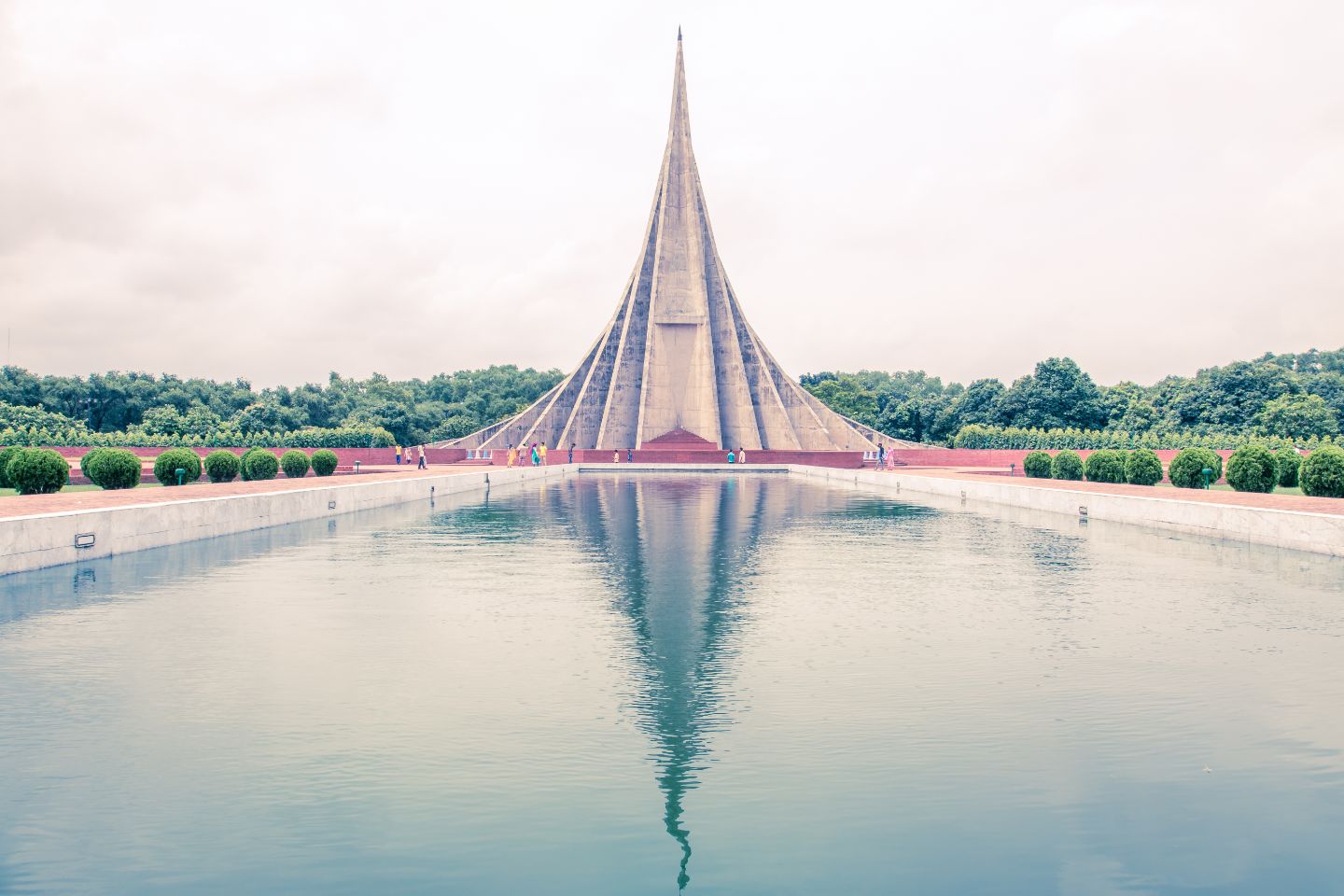
7 pillars of the memorial
Although it looks like a triangle from afar, a closer look reveals that the monument consists of seven triangular pairs. In fact, as each pillar is triangular in shape and has different heights, the 45-meter-high monument looks different from different angles. Each pillar is made of concrete, which separates the monument from the red brick aesthetic of the rest of the courtyard.
These seven pairs of the National Memorial basically point to seven different stages of our freedom movement. The first of these 7 historical contexts is the language movement of 1952. This was followed by the United Front elections of 1954, the Constitution Movement of 1956, the Education Movement of 1962, the Six-Point Movement of 1966, the Uprising of 1969, and then the final victory through the Great Liberation War of 1971. The seven pillars of the National Martyrs’ Memorial signify these seven events which are the main catalyst for the independence movement of this country.
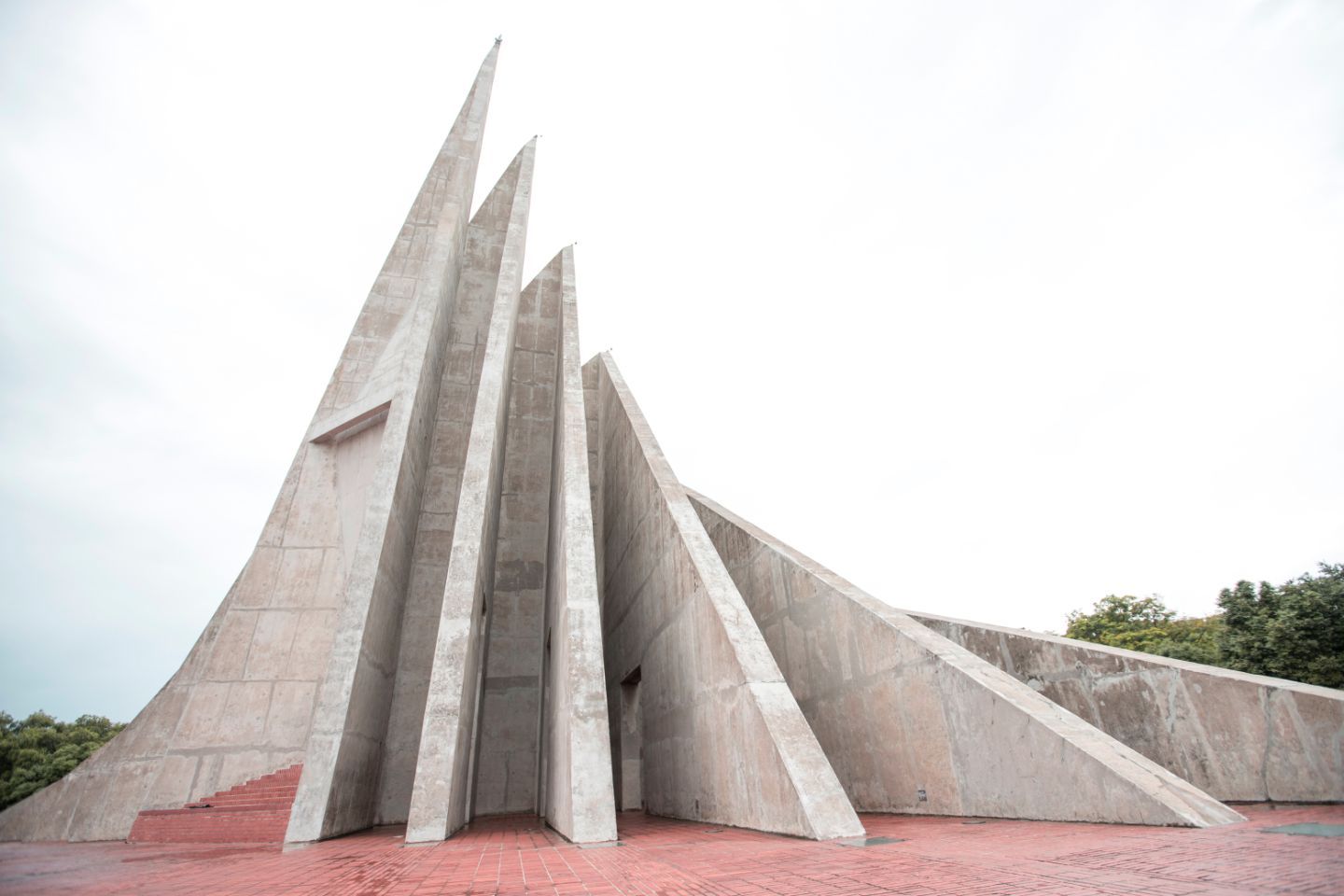
However, these 7 pillars or the number 7 also have different implications if we look at them from a different perspective. For example, the language movement of 1952 is considered as the basis for our freedom. The sum of the last two digits of this year is 5 + 2 = 7. Again, Father of the Nation Bangabandhu Sheikh Mujibur Rahman called for independence on March 7, 1971. Our Victory Day is 16th December. The sum of the two numbers of this date is also 1 + 6 = 6. Lastly, these 7 pillars are a reminder of the outstanding contribution of 7 Bir-sreshtho of our liberation war.
History of construction
In 1978, the Public Works Department of the Government of Bangladesh adopted a plan to build a National Memorial at Savar to commemorate the three million martyrs of the War of Liberation. Subsequently, a call for the design contest was made and a young architect named Mainul, who was 26 years old at that time, submitted the design for the memorial. He was the first among about 17-18 contestants and the National Memorial was built according to his design at Savar.
However, the first construction phase of the National Memorial began earlier, in 1972. It cost BDT 26 lakh for land acquisition and road construction at that time.
The second phase started in 1974 and ended in 1982. The mass grave area, helipad, car parking space, and courtyard were constructed at that time. It cost BDT 3.8 crores. However, the construction of the main memorial began in August 1982. After that, the artificial lake, greenery, and cafeteria were built.
This monument is the first memorial of the liberation war, which symbolizes our emergence as a sovereign nation and nationalism. It is the monument of our history. That is why people come to visit this memorial in flocks every day from across the nation and pay homage to the martyrs. In particular, on national days, it is adorned with flowers and becomes a place bustling with activities. So visit the National Martyrs’ Memorial if you haven’t already.

